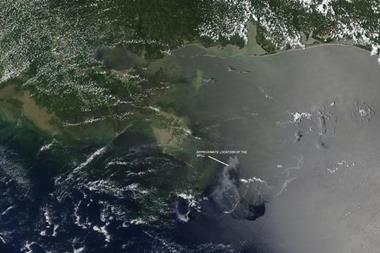The failure of anyone to make a sustained impact on Somalian piracy is leading to increasing risk
The world’s media has grown bored with reporting the continuing stream of ‘ship-jacking’ off the Horn of Africa, so it was something of a rare event when a story from the region appeared on the BBC and elsewhere on June 2nd. It picked up on a statement by NAVFOR (The EU naval force operating off Somalia) that a Libyan-owned, North Korean flagged vessel, the MV RIM had been recaptured by its crew from the pirates who had seized it in the Gulf of Aden on February 3rd as it was sailing with a cargo of clay for its final destination of the Indian scrapyards. The media conspicuously failed to report the curious follow-up, that on June 4th, the crew of the RIM had abandoned the ship ‘on the request of the master’ and were being taken to port by a NAVFOR warship. It is also curious that the pirates apparently had demanded a $3m ransom for a rust-bucket with a cargo of clay, and that two rival groups of pirates appear to have come to blows over the ship – giving the kidnapped crew the chance to take action. Was the ‘clay’ guns for Yemen? uranium ore for Iran? Who knows?
The mystery of the MV RIM is, however, just a tiny pustule in the running sore of the threat to international shipping in the Indian Ocean. According to the International Maritime Bureau’s (IMB) piracy reporting centre, over a mere eight days between May 30 and June 7, there were six attacks on shipping in and around the Gulf of Aden, one of which, by six pirates armed with rocket-propelled grenades, was successful. As of June 3rd, at least 22 foreign vessels were being held against their will in Somalia, while an estimated 412 seafarers – including the elderly British couple Paul and Rachel Chandler – were being held to ransom. In the pithy words of business website, australia.to, ‘Except for improved defensive measures on merchant ships, none of the other responses like the deployment of navies, killing or arresting Somalis as well as destroying boats and weapons, talks with proxy-leaders, training of so-called governmental forces etc have had the slightest positive impact to improve the security of maritime traffic in innocent passage, and none of these measures have curbed Somalia-based piracy around the Horn of Africa’.
Commanders of the various naval forces in the area may differ in this assessment, pointing out that the number of attacks on shipping diminished during the first quarter of 2010, but they are also aware that the presence of anti-piracy naval forces is leading to changed tactics by the pirates – using mother ships to transport their skiffs to cover a greatly extended geographical area, so that even the Seychelle Islands, 1,500 km off the African coast, are now in the front line. The BBC also reported in April, that NAVFOR was facing a deliberate attempt to swamp the defence by pirate ‘swarms’.
The failure of anyone to make a sustained impact on Somalian piracy is leading to increasing risk. Those in the front line – ship owners, organisations with valuable cargos, and those who insure or reinsure them are showing increasing frustration. Back in January, the secretary general of the International Union of Marine Insurers (IUMI) said, "If ransom demands are increasing we have to take that into
account with our underwriting. However, piracy is a global issue, not just one for
insurers. It is not just a shipping problem, it is a global governmental issue that keeps
being swept under the carpet." IUMI president, Deirdre Littlefield added "The focus has not been on a global solution. It continues to get worse, as it is not being solved. The fact that senior governmental figures are asking insurers to take a massive role in combating piracy shows that we have a problem."
The IUMI, together with other international bodies involved in shipping, issued a petition in May entitled ‘Piracy – Enough is Enough.’ It aims to forward half a million signatures to world governments in September. The petition calls for governments to:
* dedicate significant resources and concerted efforts to find real solutions to the growing piracy problem;
* take immediate steps to secure the release and safe return of kidnapped seafarers to their families;
* work within the international community to secure a stable and peaceful future for Somalia and its people.
Laudable though these aims may be, the petition does not exactly suggest what governments can do to achieve them. And here lies the problem at the heart of the Somalian piracy: there is no obvious solution to stopping it – or even of bringing individual pirates to justice. While there is big money to be made (and it is fairly clear that organised crime networks are the ultimate beneficiaries of the huge ransoms), and while instability continues to infest the Horn of Africa, everyone relying on imported goods can be expected to pay in one way or another, through increased premiums and the cost of sustaining naval task forces.
A further risk is that ship owners will cease relying on passive anti-piracy measures, such as fire hoses and start considering more aggressive means of defence. The IMB report of an attack on a chemical tanker on June 2 state ‘The security team onboard the tanker fired warning shots in the air resulting in the pirates aborting the attempted attack.’.....
Less than a couple of hundred years ago, merchant vessels sailing the ‘Barbary coast’ or the pirate-infested waters around Borneo carried cannon as a matter of course. A return to such practices would be regrettable, but it must be on the cards.



















